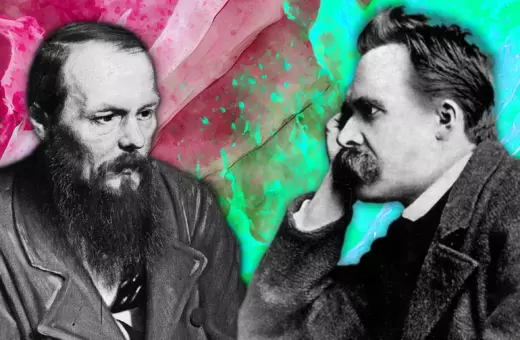This article is part of The Return of Metaphysics series, and was produced in partnership with the Essentia Foundation.
Spinoza is having a moment. Previously dismissed as a speculative metaphysician, his metaphysical monism has been rehabilitated even in analytic-dominated Anglophone philosophy. But it’s his challenge to humanism and its commitment to human exceptionalism that’s most relevant today, and the hardest to accept, argues Yitzhak Y. Melamed.
A few years ago, I took part in a conference at Bochum University, and partly out of respect for the university which hosts the illustrious Hegel-Archiev, I decided to present a paper in which I argued that, not unlike Hegel’s Encyclopedie, one can profitably read Spinoza’s Ethics as a circular text which ends just where it begins. The Q&A session after my talk was lively and joyous, but one specific question still resonates with me. “This was an interesting talk. Still, if I may. What is the point of engaging again with Spinoza’s metaphysics? Has not Kant already proved that dogmatic metaphysic is obsolete?” asked one of the participants, a senior Kant scholar and philologist. Since the question was genuinely well-meant and fair, I asked the scholar whether he would mind repeating Kant’s proof, so that we could consider it jointly. At which point I was rewarded with a warm, generous, smile followed by a hand gesture which I interpreted as indicating certain desperateness or recognition that some “dogmatic” philosophers are just incorrigible.
 SUGGESTED READING
The Return of Metaphysics: Hegel vs Kant
By Robert Pippin
SUGGESTED READING
The Return of Metaphysics: Hegel vs Kant
By Robert Pippin
While few contemporary philosophers would be as blunt as this colleague and friend, one must admit that the underlying view that Kant killed off metaphysics dominated modern philosophy until very recently. This perception of Kant as the “all-crushing [Alleszermalmer]” destroyer of metaphysics, is not groundless.
Today, the main resistance to Spinoza’s return - but also the reason why it is urgent and necessary - is less the dismissal of metaphysics as dogma and more an attachment to a dogma of a different sort: humanism. To the extent that Anglo-American philosophy has opened itself to rigorous metaphysical thought, Spinoza has been well and truly rehabilitated – much of contemporary monist metaphysics is directly indebted to Spinoza. Overcoming the attachment of (not just analytic philosophy) to humanism – the belief that human beings occupy a uniquely prominent place in nature – has proved even harder than rehabilitating metaphysics. But given the crises that this ideology has given birth to, overcome we must, and Spinoza is the philosopher to help us do it.
As far as the return of Spinozist thought in metaphysics is concerned, the two centuries that followed Kant witnessed two major waves of attempts to rehabilitate metaphysics by overcoming Kant’s various bifurcations of reality: first, the German Idealism of the early nineteenth century, and then, toward the end of that century, British Idealism. The two movements were closely related Spinoza’s metaphysical monism and systematicity were a major source of inspiration for both of them. Most of the key figures in both German and British Idealism presented themselves as either Spinozists or as attempting to provide an improved, or elevated, Spinozism.
___
Overcoming the dogma that metaphysics must be dogmatic – i.e., inadequately motivated, and obscure – was one of the main challenges for the rehabilitation of Spinozism. To the extent that contemporary analytic metaphysics is open to philosophy that is precise yet bold, and to the extent that it not any longer captivated by blind obedience to common sense, Spinozism can and will flourish.
___






















Join the conversation